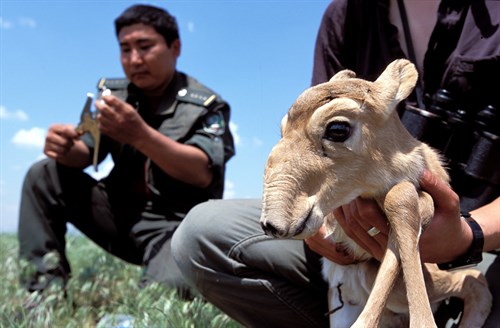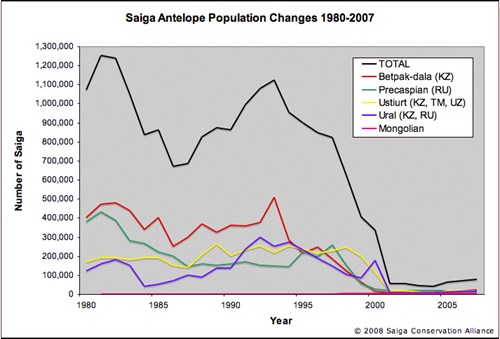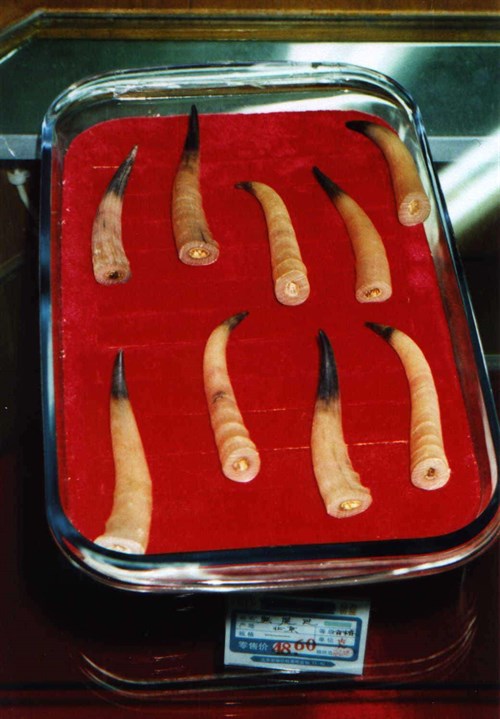
Historically, the saiga antelope was a common species on the Eurasian steppes and semi-deserts. However, the economic and social turmoil following the break-up of the Soviet Union led to a dramatic population decline, of more than 90% over 10 years, causing the species to be listed as Critically Endangered on the IUCN Red List. This decline was caused by overhunting for horns, exported for Chinese traditional medicine, and as meat for local consumption.

Population graph - 1980-2000 data from Milner-Gulland et al. (2001); 2001-2007 estimates from CMS Overview; 2003-2007 Kazakhstan data from Duisekeev & Sklyarenko (2008).
In each of its range states, committed bodies and individuals are working towards preserving the saiga antelope. This includes both in-situ and ex-situ conservation informed by best-practice science, international research and publication, monitoring and captive breeding programmes, global advocacy and fundraising, and education and outreach projects in communities that share saiga habitat. These efforts have led to the stabilisation and even recovery of some populations, although the species remains at very low numbers compared to historical levels.

